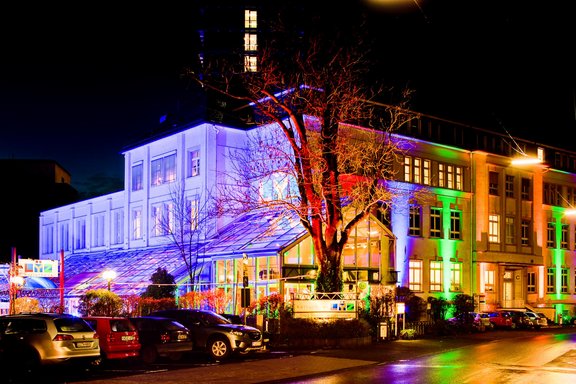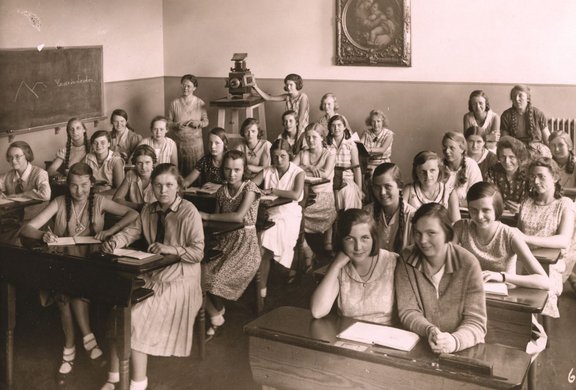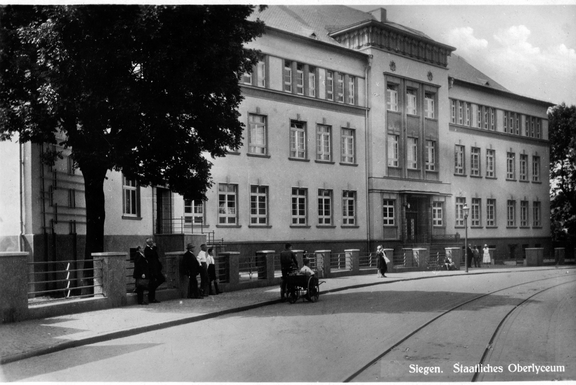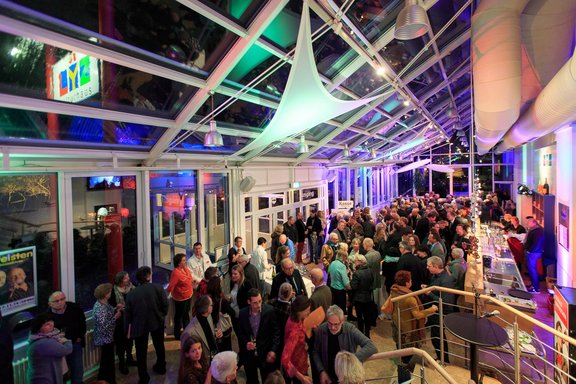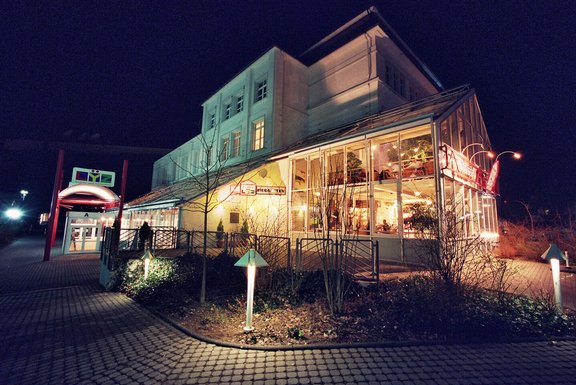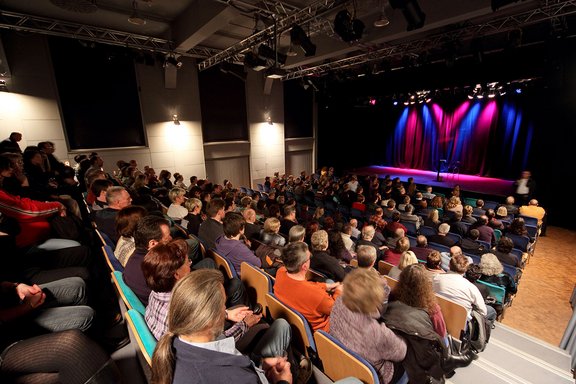magaSIn
From girls’ school to cultural centre
The German Empire in the 1830s; the Prussian administration is sending more and more officials to Siegen. Arriving with their families, they call for a high school for girls – in other words, for their daughters. A few years later, their wishes are met when the ‘Staatliche Neusprachliche Gymnasium’ opens its doors.
As the available premises (private rooms and parts of the city hall) struggle to accommodate rising student numbers, public opinion swings behind the idea of a new building. In March 1886, 120 schoolgirls move into a new building on St.-Johann-Strasse, a light brick structure with a large staircase leading up to the main entrance. In 1911, the girls’ high school changed its name to the Lyzeum, the name it retains to this day.
World War Two
The Lÿz building on St.-Johann-Strasse is one of a handful to come through the heavy bombing raid on Siegen in December 1944 largely unscathed. Just two months later it will not get away so lightly, but fortunately the Gründerzeit-era building is not too hard hit, sustaining only a burnt-out roof truss and some other damage.
The ‘wild girls’
The freedom movement of 1968 is taken very much to heart by the schoolgirls: in 1969, shortly before their school-leaving exams, final-year students rebel against teaching methods and course content. Their biggest grievance is the constant interference of the school in their private lives; the dispute culminates in riots, protest marches and police intervention when a pregnant student is expelled from the school. Then the strike spreads to the nearby boy’s school as ‘young savages’ occupy the auditorium of the mechanical engineering department and force the resignation of Ursula Erfurt, the principal. This strike and the growing controversy over equal opportunity for girls and boys paves the way for the introduction of co-education, i.e. the drive towards a common education for both genders which gathers pace in Siegen during the 1970s.
Culture makes a comeback
In 1973, the girls’ school changes its name to the ‘Gymnasium Am Rosterberg’; two years later, it relocates to a new building on the eponymous Rosterberg hill. The Lÿz becomes a technological centre, accommodating emerging businesses. Its cultural roots are only revived in 1989 with the advent of the Siegen ‘Kultur!Büro’. In the early 1990s, numerous theatrical productions successfully take to the stage of the little Lÿz theatre as the ‘Kleines Theater im alten Lyzeum’ becomes the ‘Medien- und Kulturhaus Lÿz’.
World première for Paul McCartney in Siegen
One cultural highlight arrives in the summer of 1999 when Sir Paul McCartney chooses to unveil his paintings to the world on St.-Johann-Strasse. Almost 40,000 visitors from many countries are drawn to Siegen to see his works. So why Siegen? It all starts with nine-year-old Frederike, daughter of Wolfgang Suttner, cultural events manager at the time. Having heard that McCartney is also a painter, she asks her father if he might exhibit some of his pictures. Suttner fires off a letter, and shortly afterwards receives an invitation to England. He is interested in Paul the painter, who was winning prizes for art at the age of 11, not Paul the extrovert billionaire taking up painting as a new hobby. Having established mutual trust, the superstar opts for Siegen – a completely unfamiliar venue in his circles – as a base for his exhibition. His unforgettable visit remains a great honour for the city.
For more information, visit www.lyz.de
